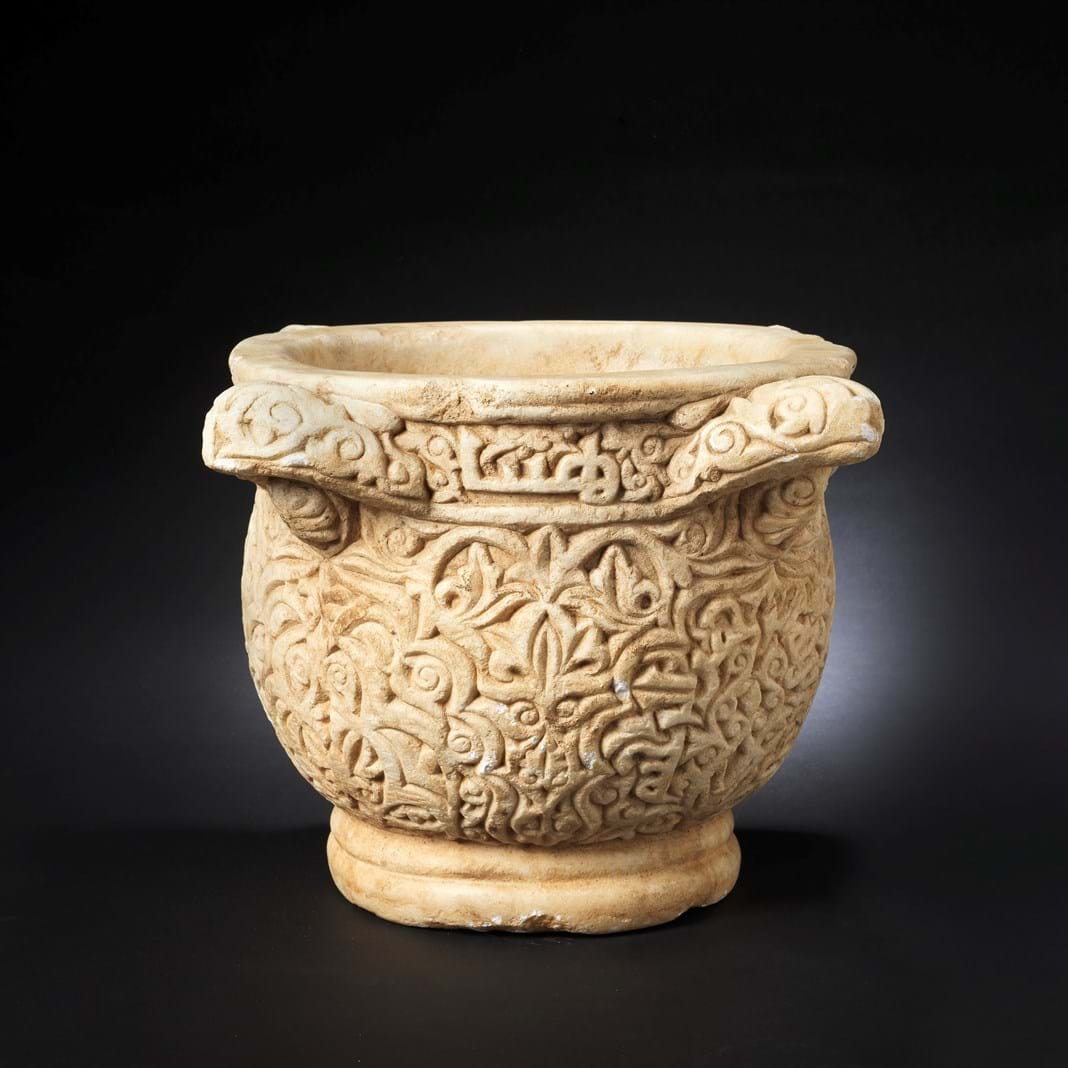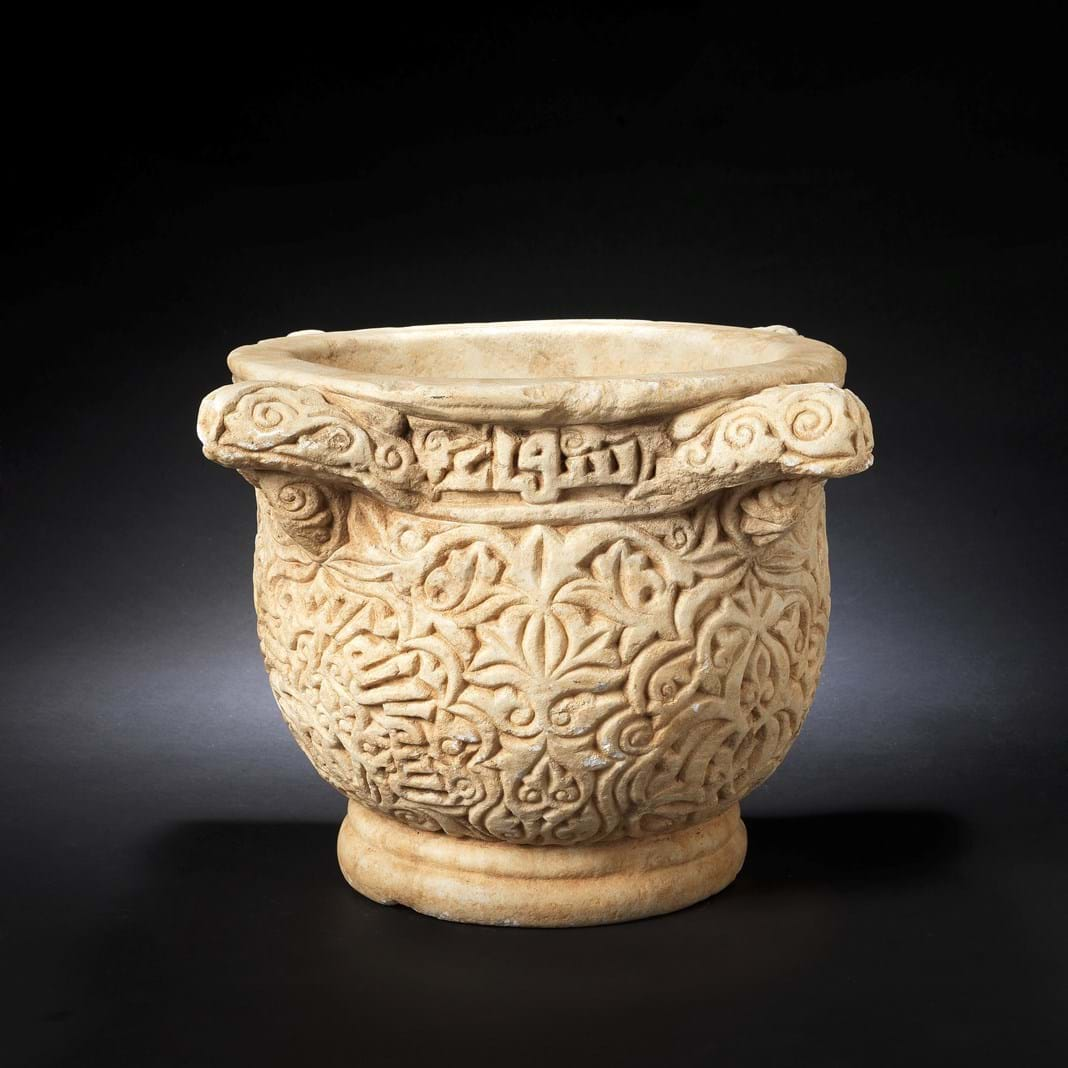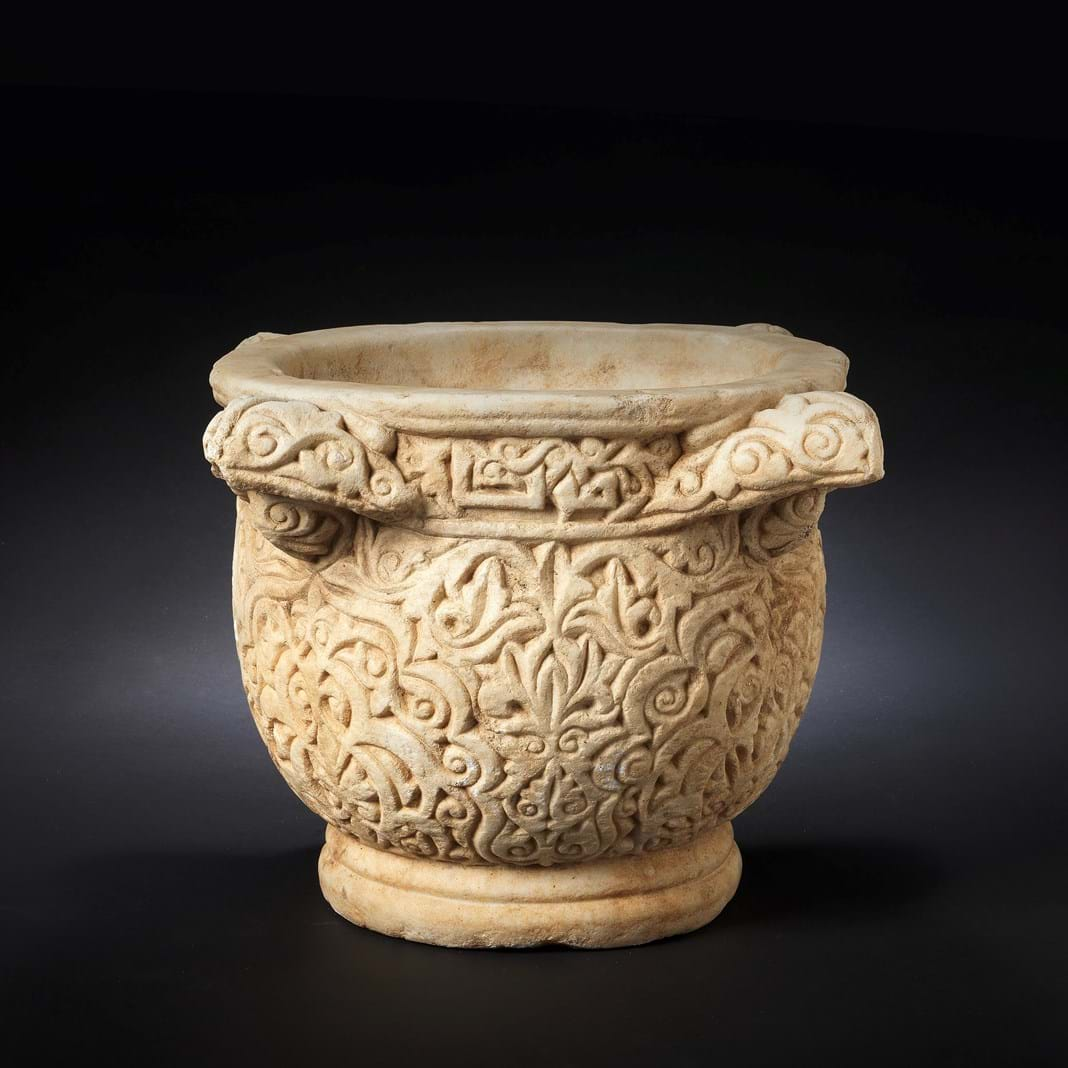A marble water basin carved in high relief
Of bulbous form with a flat rim, the basin sits on a narrow circular foot. At the top, protruding in a cruciform arrangement, four substantial, everted and bulging flanges. The exterior surface is covered in its entirety in a complex arabesque consisting of a variety of split-leaf forms carved in high relief. The pattern divides the surface into four lobed arches, one of which is outlined by a band of calligraphy in kufic script. Further kufic inscriptions below the rim; intact.
Inscriptions:
On the body, the basmala; around the rim, “May it be wholesome” and “May recovery be tender”
The association of these inscription with health, suggests that this basin could have been made for a maristan, (a place of healing for physical and mental ailments run by a pious foundation), where, filled with water, it would have occupied a prominent position, probably on a pedestal at the centre of a courtyard.
Comments
We cannot be certain of the function of the basin. The absence of a hole at the bottom precludes its being a fountain. It is more likely to have been a container for drinking water. Coming to its bulbous form, it echoes the general shape and volume of Byzantine ‘basket’-type column capitals of the 6th century. At first sight, this would suggest it could have been a spolium, a piece from a disused earlier Christian building re-carved in the Islamic period. Closer examination of such capitals, however, shows that their overall form would not allow for the creation of the four prominent protrusions at the corners of our basin. Should it have been a spolium, therefore, the original is much more likely to have been a Late Roman or Early Christian Corinthian style capital, whose prominent acanthus-leaves at the corners could be re-carved into the present shape.
As for the decorative arrangement on the body and the treatment of the foot, we find echoes of these on a 13th-century Ayyubid marble basin from Hama in the Victoria and Albert Museum, London (museum number 335-1903). Closer to the date of our basin, however, are two marble corner posts with domed terminals in the David Collection, Copenhagen (Kjeld von Folsach, Art from the World of Islam in the David Collection, Copenhagen, 2001, p. 245, no. 392). They have similar kufic inscriptions and scrolling foliate decoration based on the split-leaf form. A direct comparison is also provided by the horizontal inscription and the interlacing arabesques on a marble mihrab panel attributed to the early-13th-century, Zangid dynasty that sold a few years ago at Sotheby’s (Arts of the Islamic World, 06/10/2010, lot 136).
For further comparisons, see: Ernst Herzfeld, “Damascus: Studies in Architecture, II. The Cruciform Plan. Syrian Architecture, Period of Nur-ad-Din”, Ars Islamica, X, Freer Gallery of Art, The Smithsonian Institution and Department of the History of Art, University of Michigan, 1943
Origin
Syria or Mesopotamia (Jazira)
Date
11th/12th century
Height: 40 cm
Width: 61.5 cm (max)
Diameter: 45.5 cm (rim)
Provenance
George Moro, Montreal Canada, 1982
Private collection, Montreal (acquired from GM's widow in 1992)
Bonhams, London, 23/04/2013, lot 22



